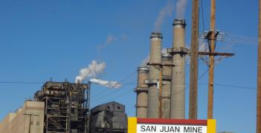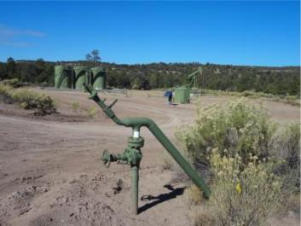



Preserving and protecting the basics of life, like
air, water, soil and electromagnetic safety -
should be top priority.
Environment
Environmental Concerns/SW

Uupdated 11/22/2014TED
PDATED 2/1/2014AIUpdated 2R
AIR AS LIFE
Simply put, good clean air is an important thing to have around. Air
quality impacts everything - what we take into our bodies through
our breath and what goes into nature. What is in the air eventually
gets into everything - water, soil, and food.
When you think air, think water because that stuff up there lands
down here - it gets into streams, rivers, lakes, oceans and rain
water. We cannot always see the bad materials in the air - just
because it seems clear does not mean it is clean. Some highly toxic
pollutants are invisible. On the other hand, brown or hazy air is
often a sign of bad air and can be depressing, besides.
JOBS AND QUALITY OF LIFE
Safety is not just about how a plant conducts its mechanical operations.
Health and safety go beyond that. The public might have to struggle to
discover for sure that the posted signs found around power plants indicating
a safety-driven approach are in fact representative of what goes on within the facility itself, but we can ascertain from the
region’s quality of water and air what goes on outside its boundaries. A company’s management and personnel may be
doing the right things for technical safety while working in an atmosphere of low health and well-being. Are the workers
happy? Do their managers speak to them with respect? Are fellow employees encouraged to work with and speak to other
employees with patience, consideration and respect? Is the work environment rough and tough? Technical safety might not
take into consideration the health, emotional and mental well-being and overall safety of people in a more encompassing
sense.
Airborne Herbicides and Pesticides
City, County and State governmental herbicides sprayed regularly along roadsides and elsewhere might have an impact on
air quality for the entire area especially if the products are not sprayed close to the ground, as from the back of trucks. This
is something that probably needs to be looked into more carefully.
Vehicular Emissions and Global Warming
http://www.ucsusa.org/clean_vehicles/why-clean-cars/global-warming/
http://www.wri.org/publication/content/8468
http://environment.about.com/od/globalwarming/a/autoemissions.htm
http://www.epa.gov/otaq/climate/documents/420f11041.pdf
Water, Water, Water
(see RESOURCES - WATER)
Four Corners
Many of us in the area are still acting as if we have full capacity water to spare, and we do not. One way to cut down on water
consumption is to keep the native vegetation as much as possible when building new construction rather than clearing it to put up
naturally more northern climate trees and other nursery grown plants which require regular water. This is a high desert, not a
Colorado forest. It is not the Northwest Coast. It is not the Midwest nor the East Coast. This is the high desert of the Four Corners,
part of an area which can be found throughout Arizona, Colorado and Utah; it is a special place with lovely vegetation and raw, rugged,
and worthy landscapes in its own right.
The Four Corners area straddles a more pronounced desert to the south and an increasingly mountainous region to the north in
Colorado. Both Durango (in the southwestern corner of Colorado) and Farmington (in the northwestern corner of New Mexico) have
high desert terrain, but Durango, located at the base of the Rocky Mountains, shifts toward taller pine, more diverse oak and longer
spans of aspen country. Both La Plata and San Juan counties are feeling the water crunch. Xeriscapic plants supplementing already
present native vegetation can add variation and color for people wanting more diversity in the plant life look. There are many different
things which pull on our water supply, not just gardens. Commercial and industrial pursuits may individually take more water while
increasing numbers of residential properties may in bulk increasingly do so. There may be people in the area taking more water than
is necessary.

G














- INDEX - environment
- INDEX resources
- Animal Issues
- Env. concerns SW
- Fukushima
- Fukushima website links-summary
- Recycling
- Water
- Renewable energy
- water issues
- sustainable practices
- Connecting for Conservation
- Libraries & Museums
- Media In Area
- Museums & Archaeology
- Food Competence & Gardening
- Oregon Coast Deforestation
- Schools Nature, Biology, Etc.
- Resources General Environmental
- Solar pros & cons
- Land Use









